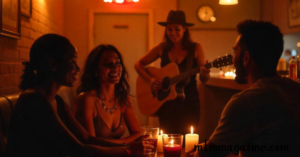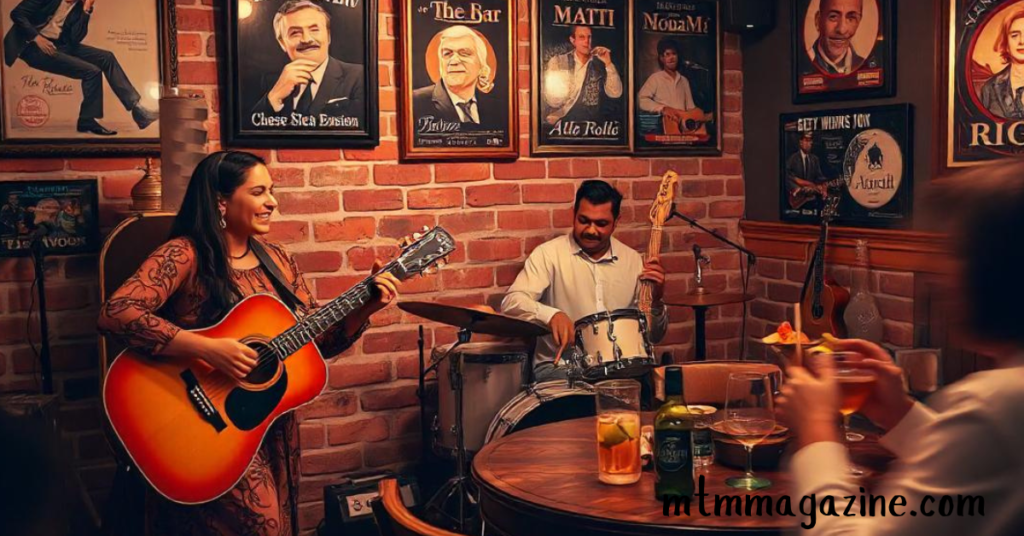The 1960s was a time of transformation and rebellion in American culture, and nowhere was this more evident than in the music scene. Across the country, young people gathered in bars, clubs, and music halls to celebrate rock music, a genre that resonated with the spirit of freedom and change. Putnam County, New York, became a unique hub for this culture. With its vibrant bars and rock dens, the area attracted music lovers and aspiring artists alike, contributing to an unforgettable chapter in New York’s musical history.
In this article, we’ll explore how Putnam County’s bars in the 1960s shaped the local music culture and left a lasting impact on the community.
The Rise of Rock Music in the 1960s
The 1960s was an era of cultural shifts, political movements, and musical revolutions. Rock music became a voice for the youth, offering an outlet for expression and unity. Bands like The Beatles, The Rolling Stones, and The Doors gained massive popularity, influencing young audiences across the United States. Putnam County was no exception; the area embraced this new music with open arms, and many local bars became home to rock dens where people could gather, listen to music, and socialize.
The rock dens in Putnam County offered more than just music; they became spaces where people from different backgrounds could meet, share ideas, and support one another. For many, these bars became safe spaces that welcomed creative exploration and freedom.
Why Putnam County Was a Unique Rock Den Hub
Putnam County’s proximity to New York City made it a convenient escape for city dwellers looking for a more relaxed and intimate music scene. Unlike the crowded clubs in Manhattan, Putnam County’s bars were known for their welcoming, close-knit atmosphere. Musicians and fans alike were drawn to this community-oriented vibe. Many New Yorkers found the drive to Putnam County well worth the journey, as it offered an alternative to the fast-paced city scene.

Moreover, the rustic charm of Putnam County’s countryside added a unique character to its rock dens. Surrounded by scenic landscapes, the bars felt like hidden gems, which enhanced their appeal as gathering spots. The environment allowed for a more relaxed vibe, fostering creativity and spontaneity in a way that was sometimes harder to find in larger urban areas.
Notable Bars and Their Contributions to Rock Culture
Several Putnam County bars from the 1960s became legendary for their contributions to the local rock culture. Here are a few of the most notable ones:
1. The Red Barn
The Red Barn was one of the most iconic venues for rock music in Putnam County. Known for its cozy, rustic setting, this bar quickly became a favorite for both locals and city visitors. It hosted local bands and occasional guest performances from up-and-coming artists, offering a platform for musicians to share their work. The Red Barn became a place where musicians could experiment and test new material before moving on to larger venues.
2. The Beacon Room
Another popular bar, The Beacon Room, was famous for its lively atmosphere and commitment to showcasing rock music. The Beacon Room attracted a loyal crowd who gathered to enjoy the latest rock hits and support their favorite bands. The bar’s owners were known for encouraging creative freedom, allowing artists to perform original songs that might not be accepted elsewhere.
3. Stone House Lounge
The Stone House Lounge stood out as a rock den with a focus on blending rock music with a relaxed, intimate ambiance. Located in a rustic stone building, this venue offered a unique atmosphere that appealed to rock fans looking for an escape from the bustling city life. The bar’s layout and decor added to the music experience, creating a memorable setting for fans and artists alike.
The Legacy of Putnam County’s 1960s Rock Dens
Though many of these bars no longer exist, their legacy lives on in the memories of those who experienced them. The 1960s rock dens of Putnam County helped shape a community that valued creativity, expression, and camaraderie. They were places where music and friendship went hand-in-hand, where young people could feel a sense of belonging, and where musicians could explore their potential without judgment.
These venues influenced future generations of musicians and music lovers in Putnam County and beyond. The rock dens inspired new bars and music scenes in the area, showing that small, community-focused venues could play a big role in the development of music culture.
Conclusion
The story of Putnam County NY bars 1960s rock den era is a reminder of the power of music to bring people together. In a time marked by social and political change, these rock dens provided a place for young people to connect, express themselves, and find inspiration. Although times have changed, the spirit of these rock dens still resonates with those who remember them and those who seek to keep their legacy alive.
The bars of Putnam County in the 1960s may be gone, but their influence on the local music scene and the culture of togetherness they fostered will never be forgotten.



